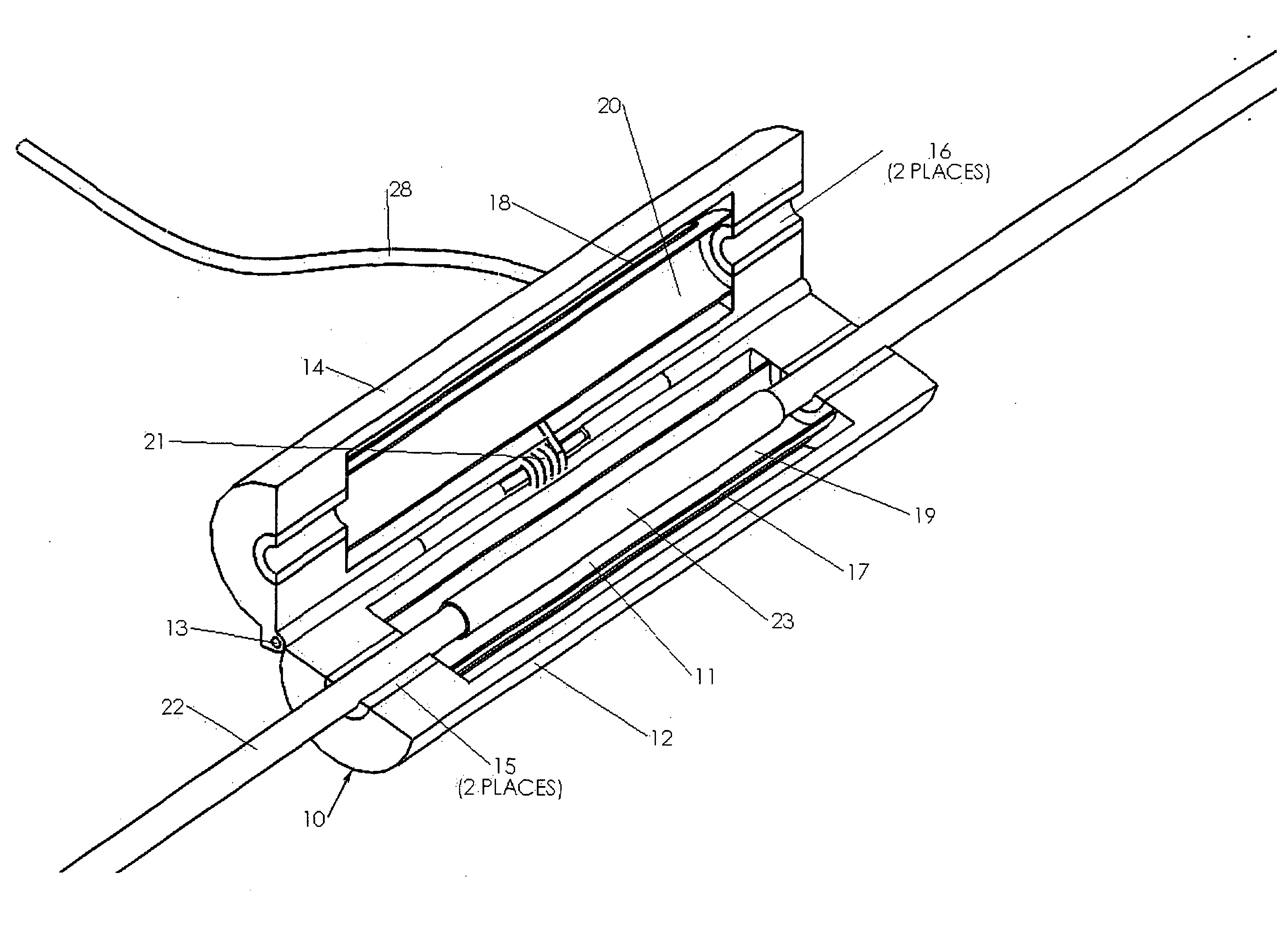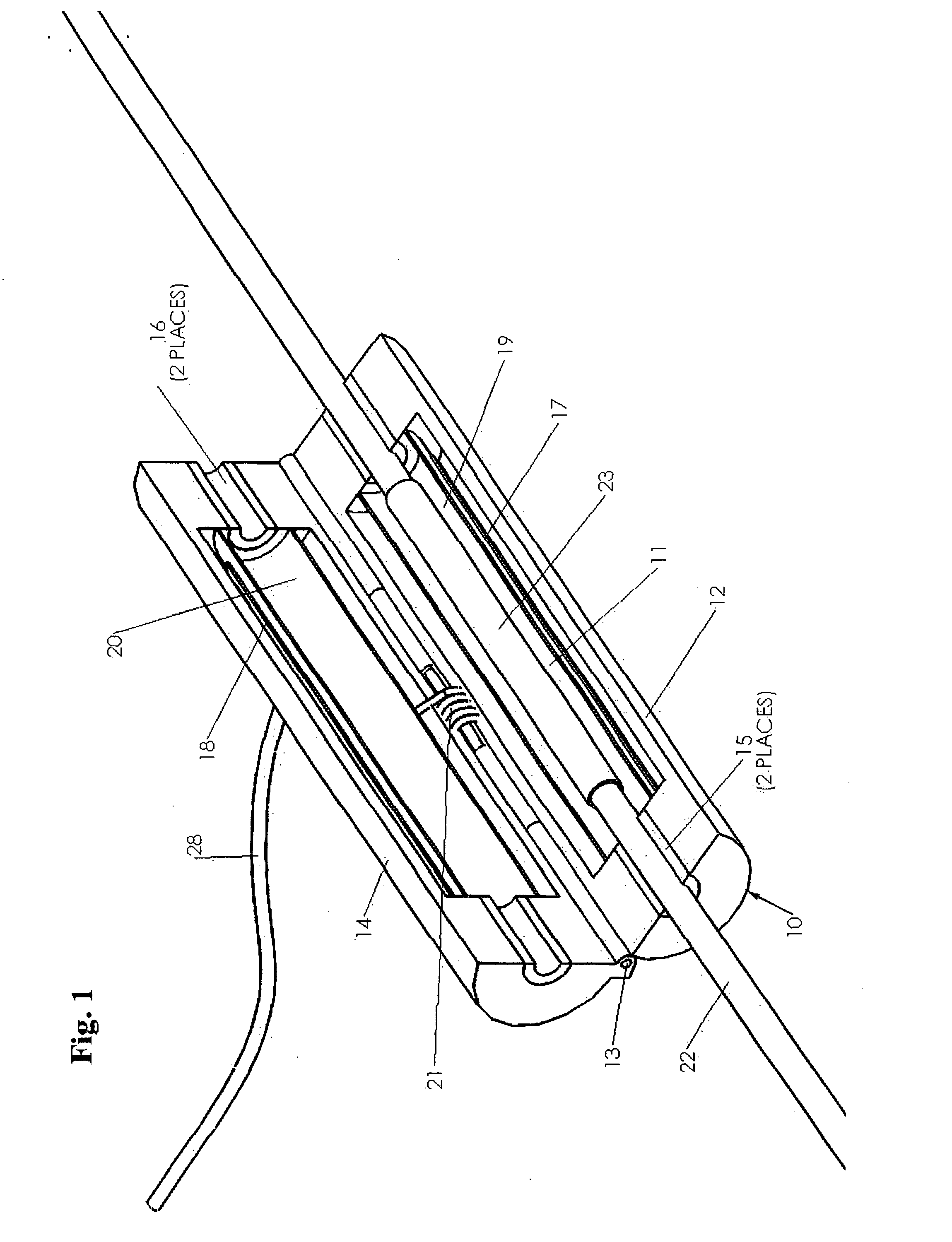Clip-on Heater
a heater and clip-on technology, applied in the field of clip-on heaters, can solve the problems of affecting the heat dissipation effect of the heater, affecting the heat dissipation efficiency of the heater, etc., to achieve the effect of preventing the capture of air bubbles, and reducing the heat dissipation ra
- Summary
- Abstract
- Description
- Claims
- Application Information
AI Technical Summary
Benefits of technology
Problems solved by technology
Method used
Image
Examples
Embodiment Construction
[0038]This invention relates to a device and method for causing desirable changes in the characteristics of a cable, wire, or fiber by the application of heat. Commonly cables are reinforced, insulated, stiffened, and the like by the application of an adhesive-lined sleeve which, when heated, shrinks substantially to tighten and seal around a particular portion of the cable. This invention addresses means of performing this operation which are unusually small, light-weight, and disposed to be applied directly onto the cable without moving it from where it might already be in service.
[0039]The following detailed description of preferred embodiments is intended to be illustrative, not limiting. It will be understood that alternative applications will be readily apparent to those skilled in the art, which are not described herein in detail but which nevertheless fall under the coverage of the appended claims.
[0040]FIG. 1 illustrates a first embodiment of a clip-on heater 10. The struct...
PUM
 Login to View More
Login to View More Abstract
Description
Claims
Application Information
 Login to View More
Login to View More - R&D
- Intellectual Property
- Life Sciences
- Materials
- Tech Scout
- Unparalleled Data Quality
- Higher Quality Content
- 60% Fewer Hallucinations
Browse by: Latest US Patents, China's latest patents, Technical Efficacy Thesaurus, Application Domain, Technology Topic, Popular Technical Reports.
© 2025 PatSnap. All rights reserved.Legal|Privacy policy|Modern Slavery Act Transparency Statement|Sitemap|About US| Contact US: help@patsnap.com



